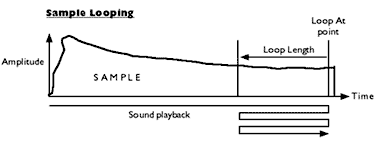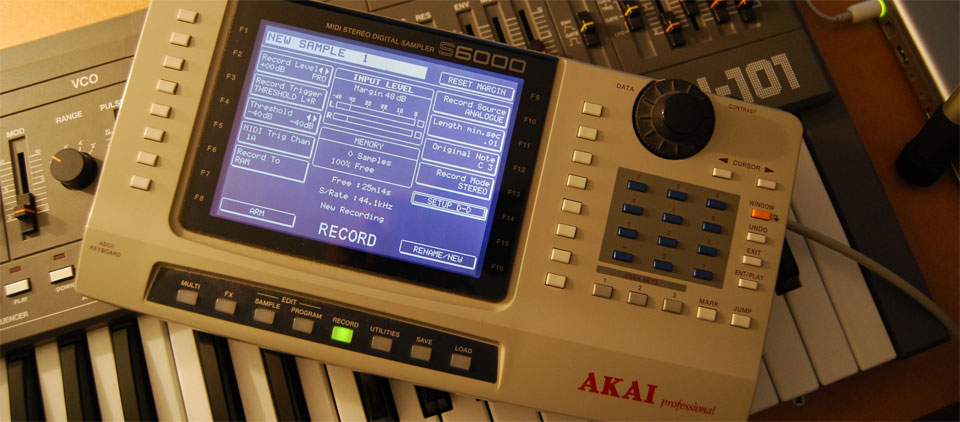Although similar to hard disk recording systems, samplers differ in several ways ...
- In order to be replayed or processed sound must be in RAM.
- Sound 'chunks', or Samples, can only be replayed from the beginning.
- Playback cannot be started halfway through a sample unless the samples Start Point is changed.
- Playback is triggered by sending the sampler MIDI performance Data, usually from a MIDI keyboard or sequencer.
- The total record time of a sampler is limited by its installed RAM, usually measured in 10's or 100's of megabytes rather than the Gigabytes of a hard disk system.
Software samplers
There are many software only samplers which run on computers (Kontakt, Logic's EXS24 etc). Most come with vast libraries of pre-recorded samples and accompanying programmes. Without a means to capture sound (line and mic level inputs on the host computer, usually in the form of an audio interface), these can only be regarded as sampler players and many users never use them to record, edit and manipulate their own sounds. In fact one of the joys of hardware samplers is the way in which they encourage creativity and experimentation with recording, perhaps because of their "hands-on" nature.
Sampler memory management
Early samplers had limited RAM memory due to its high cost. Therefore a user had to maximise the available memory using the following techniques ...
-
Once recorded, a sample was Trimmed and then the unwanted parts discarded or Cut to free up RAM for re-use.
-
Bassier sounds with less high frequency content were sampled at lower sample rates thus using less memory. Sounds containing frequencies of up to 20kHz must be sampled at a sample rate of 44,100 samples per second (44.1kHz). Sounds containing frequencies of only up to 10kHz may be sampled at a sample rate of 22,050 samples per second (22.05kHz).
-
When sampling a note from an instrument only a short recording was made of the attack and sustain portion. A process of Looping was then employed to make the sustain section play over and over to simulate a longer sound.


